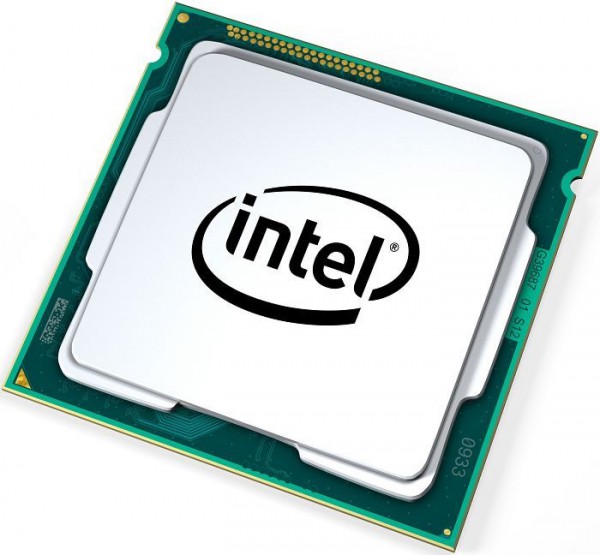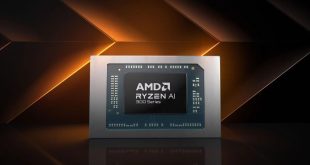Intel's upcoming Skylake-S 14nm CPUs are set to replace Intel's Haswell refresh line some time next year, bringing with it a new socket, chipset and motherboards. The new socket is called LGA 1151 and has just one pin more than Haswell, Intel's current generation architecture.
The new CPU will support both DDR4 1.2v and DDR3L 1.35V, it will be up to motherboard manufacturers to support one or the other. The chipset that will allow you to overclock the new CPUs is called Z170 and it comes with a 1 x 16 plus 2×8 or 1×8 plus 2×4 PCIe express 3.0 combination.
The Z170 boards will support two memory channels with two modules each, six SATA 16Gbps ports, a maximum of 20 lanes for PCI Express ports and for your storage needs, these new motherboards will support a max of three SATA Express ports x2 and either four M.2 connections or two SATA Express.
Intel Rapid Storage Technology 14 and Intel Smart Response Technology will also be supported. Some boards may come with up to 14 USB ports, ten of which can be USB 3.0. Intel won't be supporting USB 3.1 just yet, although that technology is due out sometime next year.
Discuss on our Facebook page, HERE.
KitGuru Says: Intel's Skylake CPUs will be with us fairly soon, bringing with it new motherboards, a new socket and a new chipset. The new CPUs are estimated to launch around June next year. Will any of you guys be upgrading? What CPU are you currently using? Are you happy with it?
Via: Fudzilla
 KitGuru KitGuru.net – Tech News | Hardware News | Hardware Reviews | IOS | Mobile | Gaming | Graphics Cards
KitGuru KitGuru.net – Tech News | Hardware News | Hardware Reviews | IOS | Mobile | Gaming | Graphics Cards




I personally wont upgrade right away, as I have a i7 4770k that I’m very pleased with.
Article says manufacturers have to choose between DDR3/4, can they not use both like the DDR2/3 boards?
“six SATA 16Gbps ports…” a?
DDR3 uses 240 pin, while DDR4 uses 288 pin. So unless they make some sort of adapter, they can’t use both.
I’m running a 3570k @ 4.6ghz. I honestly don’t see a point in getting a new CPU unless I am adding cores without losing per-core power, which would mean going X99. That is about an $850 upgrade to get what would be the bare minimum for me to consider it an upgrade. That would be an i7-5820k, MSI X99 SLI Plus, and 16gb DDR4.
But broadwell will be z97 compatible right? I’m a bit puzzled to why someone would invest in broadwell with skylake not too far away, it would have made sense of broadwell was allready out, but it’s no.
it’s computer parts something is always right around the corner
So it’s not worth upgrading to i7 5960x?
Basically, it is Broadwell with DDR4. I’ll be waiting for Intel’s first consumer-level quantum CPU before I upgrade from Ivy Bridge ;). Which, at this pace, is “right around the corner” as well and will still only natively support 1x 16x PCIe 3.0 or 2x 8x PCIe 3.0. Basically, if you are a PC gamer, if you have a Sandy Bridge or newer Intel rig, there really isn’t much incentive to upgrade even at Skylake let alone to what is currently out in Haswell. Unless they come out with a new PCIe revision or a completely new slot to replace PCIe AND a GPU that can come close to saturating it, there is no reason to upgrade because we can still simply swap out an old GPU with a new one and have a huge upgrade in gaming performance. There are still people who are using LGA 775 Core 2 rigs simply because all the latest PCIe 3.0 x16 GPUs are backwards compatible to their rigs. They definitely have a CPU and RAM bottleneck but if their board has PCIe 2.0 x16, all they would have to do to keep up with newer PCs is swap in a new GPU every 3 years or so. Right now, Intel thinks they can force people to upgrade by changing the CPU socket every 2 generations. That might be true for non-gamers, but for them the only major change that would force most gamers to upgrade would be a new GPU slot which is what happened when we went from legacy PCI to AGP and then from AGP to PCIe. We are coming up on 10 years since PCIe 1.0 came out. And according to this article, at least the next two Intel generations will use it; the next 3 if 1151 supports the next tock after Skylake.
Can I run regular ddr3 ram with this or do I have to get new ram for a BS platform?
I’m currently using an i5-4460. I was thinking of upgrading to an i7 sometime, but if I did then I’d get a new motherboard so I can overclock and stuff…at this point I miiiight just wait until Skylake comes out, then get the i7-6770k or whatever it will be called.
Still a terrible chipset. Thats is why if AMD delivers on ZEN gaming will surely shift AMDs way for multi-GPU performance. I have a 4770K and i dont see an increase against my brother 8350. Intel is such a giant crook
Hence why they would need to put both types of slot on the board like they did for the DDR2/3 boards.
Intel is not implementing USB 3.1, good luck with that one, it took Intel for ever to give us six USB 3.0, so imagine how long it would take for them to give us USB 3.1. Now for the M.2 seriously, four M.2 slot’s, where the hell are you going to mount all those slot, when you can barely get two on the motherboard.
PhoneyVirus
https://twitter.com/PhoneyVirus
https://phoneyvirus.wordpress.com/
While the chipset may support both DDR3 and DDR4 (the chipset which is most likely to be called Intel’s 10th generation chipset with motherboard numbering possibly being something like Z107, H107, etc.) it is up to the motherboard maker to decide whether or not the board comes with DDR3 slots or DDR4 slots or both which was the case back in the LGA 775 Core 2 days. I know that Gigabyte and probably a bunch of others released boards with both DDR2 and DDR3 slots on them such as the Gigabyte GA-P35C-DS3R which used Intel’s P35 chipset. It had 2x DDR3 slots and 4x DDR2 slots. Most likely, the majority of the 10th gen boards will come with only one type of memory and only a few will support both types with slots for both. My guess is that the high end boards like the Z-series will use DDR4 and the cheaper boards will use DDR3. The “mixed” DDR3/DDR4 boards will most likely be mid range boards which are usually H- or some of the cheaper Z-series boards in the $100-120 range. To the person who replied (Joshua Lewis): There is no such thing as a passive adapter that will change the pins that will allow you to go from DDR3 to DDR4 and there never will be because they use different voltages, different signaling- different everything basically. If they do have an adapter that actually works in letting you use DDR3 in a DDR4 slot then it will very likely cost MUCH MORE than what it would have cost to simply buy DDR4 RAM, they will peform much worse than DDR4 RAM and they will lack many of the features of DDR4 RAM which is why they will never exist in the marketplace. There are adapters that allow you to use laptop memory on a desktop but they have to be the same type (DDR3 SODIMM can be adapted to be used as DDR3 DIMM). The only way for a board to support both types of memory is to have seperate slots for both like that old Gigabyte board.
I was waiting for this myself, but got impatient as Devil’s canyon is enough of an upgrade to make a jump from Sandy bridge worthwhile.
But in my case it was worthwhile because what I game with is CPU bound, so I am definitely getting the benefits, I did read about a successor interface to PCI-E coming out, it would have the graphics cards mounted parallel to the board (mezzanine style connectors, and several times faster than PCI-E).
The problem there though is that’s going to cost a lot to implement, I wouldn’t be surprised if this type of connector did not go mainstream until 2016 since it is going to be a significant cost increase.